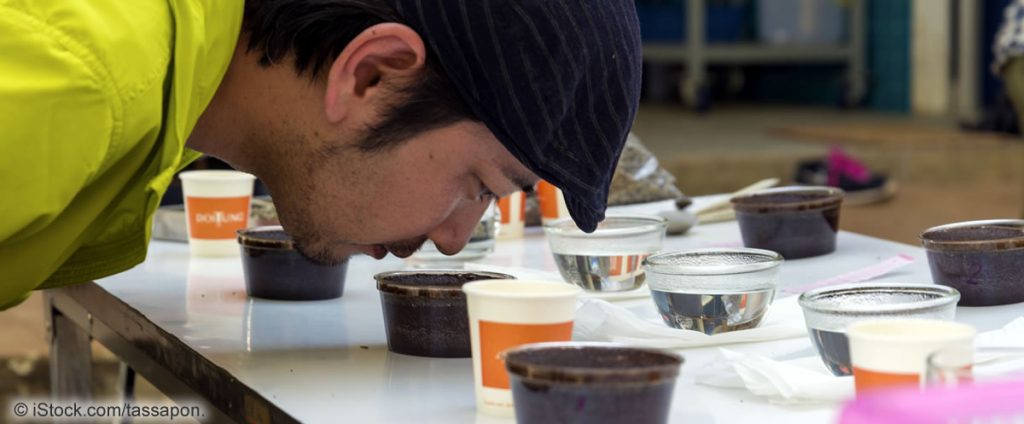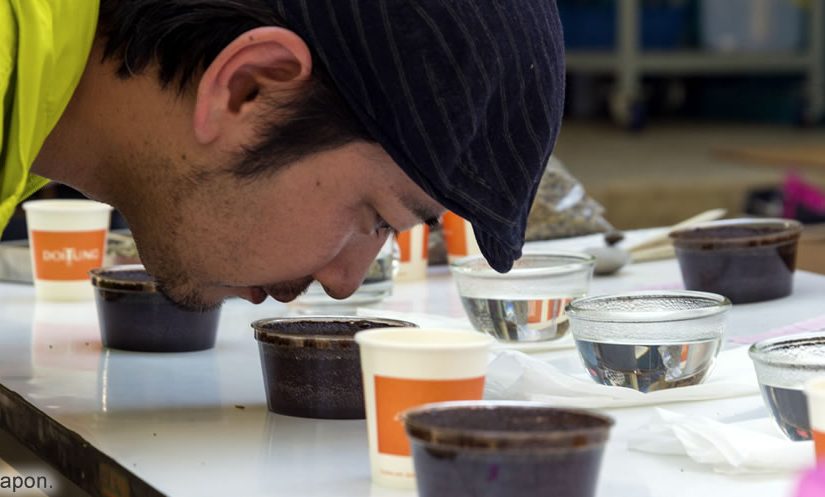Here is a step by step guide to drinking coffee! To fully appreciate the coffee and assess it quality an expert will adopt a methodical approach and some of this method will allow you to fully appreciate every sip of coffee you take.
Coffee tasting, or cupping as it also goes by, is the art of trying to taste and smell everything about a specific type of brewed coffee in order to build a flavor profile for it. When cupping, there are numerous things people look for, including aroma, taste, and mouthfeel.
Assessing coffee Aroma
Aroma is really just how the coffee smells before and after it is brewed. There are a plethora of different scents that are common in coffee, such as chocolate, caramel, various kinds of fruit, as well as a nuttiness (typically Hazelnut, Walnut and Almond notes).
Assessing coffee taste
Taste is what some would say is the most important aspect, seeing it is how the coffee is actually consumed. A few of the flavors people can pick up on, as well as all the ones listed for aroma, include the coffee’s acidity, sweetness, as well as any bitterness.
Common notes you will note in a coffee include Vanilla, Liquorice, Chocolate, Cherry, Fruity, Citrus, Woody, Smokey. Learn to differentiate between these and some are more dominant in the aftertaste whereas some a noted in the initial aroma.
Assessing coffee mouthfeel
Mouthfeel is kind of a tricky ones, as it isn’t one of those things that people notice a whole lot without trying. Mouthfeel is kind of like a heaviness on the palate, and where you can feel the flavor most, as well as the overall body. A great metaphor I have seen relates the body of coffee to drinking milk; coffee with a strong body is like drinking half and half, whereas drinking coffee with a light body is like drinking nonfat milk.
While that might sound like a lot and like one of those things only “experts” can do, everyday people like you and me can partake in this activity, and be just as good as the “experts.” This is because flavor, mouthfeel, as well as any aroma that anyone picks up on is completely subjective, meaning I could taste blueberries, and you taste apples.

While a lot of people use complicated brewing methods to taste coffee, such as pouring hot water directly over coffee grounds or beans and drinking that, any ol’ brewing method will work just fine. But use the same brew method for all samples to allow a fair comparison.
First, brew some coffee using a French press, AeroPress, or with anything else you want to use. Brewing with fresh coffee (roasted a few weeks ago and freshly ground) is ideal, as you will be able to detect some of the more nuanced flavors, but any coffee will do as long as it isn’t stale.
During brewing, notice the aromas that paint the air around you. Once the coffee is done, sit down somewhere comfortable with a pen and a sheet of paper, and write down anything you notice. At first, this might seem difficult, and it is. Jot down any scents you notice, be they sweet, fruity, or even bitter.
Slurping
Coffee changes in flavor when it starts to cool down and settle, so it is best to drink the coffee while it is still fairly hot. To achieve this, a process known as “slurping” is used.
To slurp, simply press your lips to the cup, and try to pull in as much air through your mouth as you can with a small amount of coffee, similar to drinking hot soup. This will allow the coffee to cool down enough to where it doesn’t burn your tongue, and for you to get a nice well rounded sip. Again, write down anything you taste, feel, or notice.
While tasting coffee to this degree, it is best to be focused and really pay attention to what you’re doing. If you’re having any issues thinking of what to label scents of flavors as, a quick internet search for “coffee tasting wheel” will yield a wonderful tool that consists of several different flavor profiles.
Another tool that some use, is what’s known as an aroma kit. These kits include small vials of scents such as vanilla, chocolate, and many others. This can help someone easily distinguish between different aromas in a cup of coffee.
So now you know how to drink a cup of coffee, perhaps we should add an article on how to eat a biscuit!
